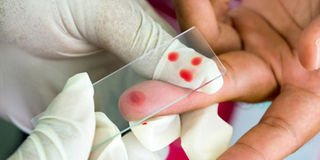Dilemma of treating malaria

The history of resistance to antimalarials in Africa is not a happy one. At one time, chloroquine was the leading recommended treatment against malaria. Resistance to this medicine first emerged in Southeast Asia in the late 1950s, and later spread to Africa over the next 30 years, devastating the fight against the disease.
The same fate followed for successor antimalarials such as sulfadoxine-pyrimethamine and mefloquine - the malaria parasite developed resistance, treatment frequently failed, and death rates spiralled in the 1980s and 1990s.
Since then, the introduction of the latest generation of antimalarials, artemisinin combination therapies (ACTs) - originally developed by Novartis - has given us effective treatment again.
With combination therapies, the probability of resistance is greatly reduced, as the parasite must simultaneously develop resistance to two drugs. Together with big investments in prevention tools like bed nets, we now have malaria on the run. So much so that the World Health Organisation has developed targets stating that we can eliminate malaria in many countries by 2030.
However, getting to these ambitious targets is not going to be plain sailing. A new study has suggested malaria resistant to ACTs was spreading faster than expected in Southeast Asia. The researchers said the findings raise the “terrifying prospect” that drug resistance could spread to Africa.
This fear is in line with the results of a Novartis-commissioned survey called Malaria Futures for Africa, which surveyed African leaders in the fight against malaria in 15 countries. Some of those interviewed expressed concerns that resistance to ACTs could spread to Africa.
One interviewee made the point that vastly increased trade between Asia and Africa makes it more likely that resistance could spread at an even faster rate than in the past.
So what can we do? The first step is to tackle the problem at its source, in Southeast Asia, through to finishing the job of malaria elimination in those countries affected by ACT-resistance. This is happening, but it will take time.
In Africa, we need to make sure we are monitoring effectively to discover resistance as soon as it emerges, and ideally only give ACTs to patients who have had a test to make sure they have malaria as using antimalarials unnecessarily can often lead to resistance.
As they lack previous exposure to malaria, children are less able to fight the parasite and thus worse hit when infected - they get more ill, and are much more likely to die than adults. Compounding this, recent studies say only a minority of children are getting proper diagnosis and the right treatment.
We also need continued investment in R&D for new antimalarials that are ready for use if and when resistance becomes widespread. This investment must happen now, as it takes many years to put new treatments through the various tests and trials needed to make them available to the public.
Needless to say, malaria resistance can also develop de novo here in Africa, therefore, we must remain ever vigilant.
As children are especially vulnerable, Novartis led the way in creating the first child-friendly ACT in 2009.
With sufficient investment and political will, we can make malaria a memory for our grandchildren.
Nathan Mulure,
Novartis Social Business




